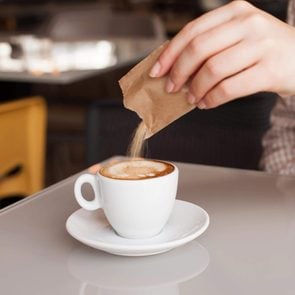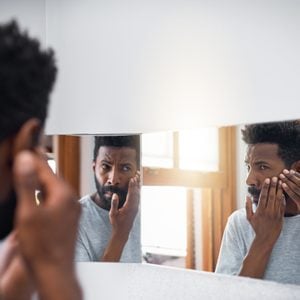The Serious Reason You Need to Stop Keeping Hair Ties Around Your Wrist
Updated: Jun. 30, 2022
Your handy carrying spot could be a major health risk.
When your hair keeps falling into your face while you’re reading, or a walk gets unbearably sweaty, wearing a hair tie conveniently around your wrist can be a lifesaver. But you might want to stash it in your bag or drawer instead. Not only is tying up your locks a habit that ruins your hair, but even keeping it on your wrist 24/7 could also create some nasty health problems.
After Kentucky woman Audree Kopp left a hair tie around her wrist, she noticed a huge red bump on her wrist, according to CBS News. It turned out to be a life-threatening infection that required emergency surgery, and her doctor said her hair tie probably caused it. “Contracting a dangerous skin infection from a hair tie is rare, but completely possible,” says Faisal Tawwab, MD, a family medicine doctor with MultiCare Physicians (he wasn’t among doctors who treated Kopp).
How in the world could an innocent black band create such a serious health issue? It all comes down to bacteria.
Why shouldn’t you wear a hair tie around your wrist?
Your skin is your body’s biggest defense against germs, but broken skin can make it less effective, says vascular and radiology expert Adam Gropper, MD, owner of Vivid Vascular. Your typical “ouchless” hair tie likely won’t do much damage, but a fancy glittery ones and elastics with metal can create tiny scratches. And those little breaks in the skin barrier open a door to let bacteria in your body. “Anything on the hair tie that breaks the skin’s barrier, even a little, is going to increase the risk of an infection,” says Dr. Gropper. (For bigger scrapes, watch out for these signs of skin infection.)
Because you use hair ties so often, they pick up all kinds of bacteria—but even new ones aren’t pristine. “If the hair tie is brand new, it’s going to have some bacteria on it,” says Dr. Gropper. “If it’s been used in the hair, then it’s going to have more bacteria on it. If it’s on the wrist, it will have even more.” And the longer it’s on, the bigger the chance that it’s picked up a particularly nasty bacteria like E. coli or staph, he says. (Don’t miss these other items that are way germier than you thought.)
And those bacteria stick around longer if you have a hair tie than if the skin is bare. If you wash your hands after touching germs, your hands will dry but the hair tie will hold on to water—and the bacteria in it, says Dr. Gropper. Bacteria love warm, moist environments, so they’ll thrive in the hair tie around your once-clean wrist.
A little pressure can slow circulation
But that’s not all—tight hair ties can heighten the risk of infection even more. If you’ve ever spent a week trying to stretch out a new hair tie, you know how tight they can be. A hair tie that leaves indents on your skin or can’t slide on and off your wrist easily could cause circulation issues, says Dr. Tawwab. With the elastic constantly pressing against your wrist, your blood—along with its immune cells and oxygen to promote healing—has a harder time getting to the area, says Dr. Gropper. “All of this creates a perfect storm, under just the right conditions, for an infection,” he says.
Bottom line: Taking your hair tie off every now and then will cut your chances of picking up germs, says Dr. Tawwab. “To avoid the likelihood of infection, remove the hair tie when doing ‘dirty work’ such as changing a diaper or doing dishes,” he suggests. If you think an old hair tie could be carrying germs, toss it in the laundry or just throw it away, he says.


